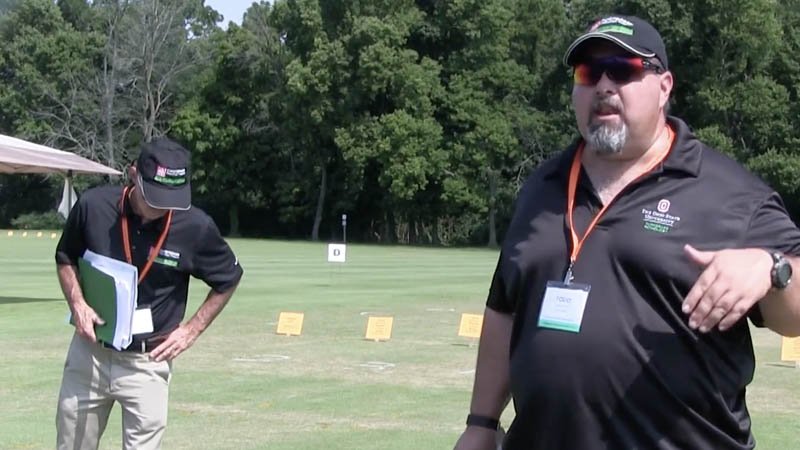
There were many reasons for golf course superintendents to panic in 2018. Two of the most prominent reasons were things called February and May.
In Ohio, and elsewhere throughout the Midwest, Mid Atlantic and Northeast, in 2018, it was cold then unseasonably warm in early winter, followed by another round of cold, wet weather, followed by hot and humid conditions that last virtually uninterrupted for almost six months, providing a toxic cocktail of conditions for cool-season grass and major headaches for those managing it.
Although 2018 was a nightmarish growing season for many superintendents, there's no reason to think these challenges are the new norm, said Todd Hicks, program manager for the turf pathology department at Ohio State University.
"Superintendents were calling say their products didn't work. 'What am I going to do? Spray chlorothalonil all year?' " Hicks said during the recent Ohio Turfgrass Foundation Conference. "No, this was an oddball year. The things that worked for you in the past are going to continue to work for you. You just couldn't get out early enough this year. Stick with your plan."
According to data compiled by Ohio State turf pathologist Joe Rimelspach, Ph.D., January in Ohio was, on average, a little colder than normal, while temperatures in February averaged 8.5 degrees warmer than the historic norm.
"That's a crapload," said Hicks as he looked across what he described as the largest afternoon OTF seminar he and Rimelspach have seen in many years.
"This is the largest crowd we've seen in 15 years. Usually, it's Joe and myself and five of our closest friends. You must be hard up for points, or you thought this was going to be really good, or we're talking over someone else's time."
Turns out it was none of the above. Instead it was a reflection of the severity of the challenges encountered this year by superintendents in the Midwest.
We're now into winter, and we didn't have a fall. And we wonder why nothing worked this year.
After a warm February, March and April were 3.5 degrees cooler than average, before temperatures in May skyrocketed to an average level that was 10 degrees warmer than usual, bringing summer-like conditions that lasted until mid-October. Then almost overnight, conditions spiraled, bringing winter temperatures to the Buckeye State two months earlier than usual.
"We're now into winter, and we didn't have a fall," Hicks said. "And we wonder why nothing worked this year."
Those wacky conditions, especially warm temperatures in February and heat and humidity that lasted well into autumn resulted in significant disease pressure, including early onset of dollar spot and the first reported case in Ohio of gray leaf spot on tall fescue.
"Tall fescue doesn't get gray leaf spot like ryegrass gets it," Hicks said. "In ryegrass, it can look good one day and the next morning, the grass is gone. In fescue, it looks more like common leaf spot. It gets weak and thins out a little, but it doesn't die out.
"This was the worst year ever in Ohio for gray leaf spot. It was a special year, and we probably won't see another one like it for a while."
Dollar spot was more problematic.
Warm temperatures in winter were enough to trigger dollar spot and cool, wet conditions prevented many from applying pre-emergent fungicide applications in a timely manner.
"Diseases woke up earlier than usual, and I'm talking February for dollar spot," Hicks said. "Pre-emerge sprays were either late or missed entirely, and when you did get out it was compromised because it was so wet."
Humid conditions provided an environment that promoted disease pressure until fall. Fungicide programs that typically are effective for up to 21 days were only lasting about a week, or less.
"We had dollar spot early, and we had it forever," Hicks said.
"We had periods of five to seven days of heat and humidity and two days of cool down, then we were right back into the heat of the battle. The reprieve was never enough to knock down the disease. Under these conditions, dollar spot is going to flourish, and that's a battle you're never going to win."

